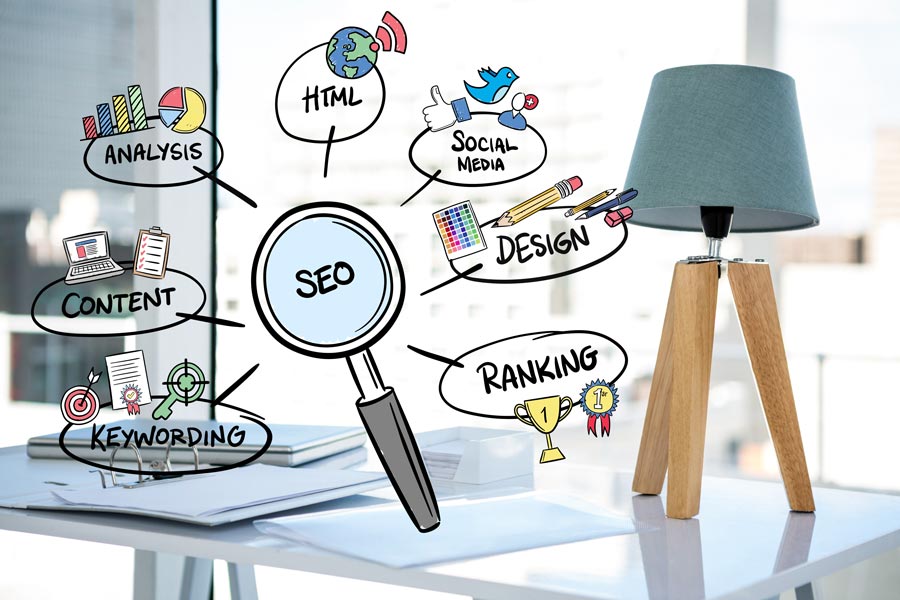If the internet were a Mardi Gras parade, SEO would be the guy setting up the route and advertising would be the one tossing beads from the float. Both are essential to making sure the crowd shows up, pays attention, and maybe follows you all the way to the after-party.
I’ve been in this game long enough to see people treat SEO and advertising like two distant cousins who barely talk at family reunions. One’s all about structure, discipline, and patience — the other’s loud, flashy, and demanding attention right now. But the truth is, they’re better together. When properly aligned, they turn digital chaos into a clean, efficient marketing machine that actually works.
Let’s start with SEO — the unsung hero of online visibility. It’s the methodical process of helping search engines understand what a website is about. SEO builds long-term credibility. It’s like being the restaurant that always has a line out the door because everyone knows the food is great. But here’s the catch: it takes time to build that kind of reputation. People don’t just wander into page one of Google by accident. It’s earned through good content, smart structure, and consistency.
Advertising, on the other hand, is that clever sign spinner on the corner making sure people know the restaurant exists in the first place. It’s instant visibility. You pay for a spotlight, and as long as the bulb’s burning, people see you. When the two come together, SEO and advertising balance each other out — one building trust over time, the other keeping the lights bright enough for the crowd to find the door.
The magic happens when they start sharing notes. Let’s say an ad campaign reveals that people in New Orleans are searching for “best web designer near me” at 2 a.m. on a Tuesday (which is oddly specific, but hey, this is New Orleans — creativity doesn’t sleep). That data can be used to update website content and blog topics. Suddenly, SEO starts working smarter, not harder, focusing on what’s actually converting rather than chasing random keywords.
At the same time, SEO insights can help advertising teams craft more targeted campaigns. If organic analytics show that users respond well to posts about “website speed” or “Google rankings,” those same themes can drive paid ad copy. The two systems feed each other. Advertising brings quick exposure; SEO builds depth and trust. Together, they form a feedback loop of efficiency that keeps traffic — and potential clients — rolling in.
Think of it like cooking a good gumbo. SEO is the roux — slow, careful, foundational. Advertising is the spice — bold, immediate, and full of punch. Too much of one without the other, and the whole thing’s off balance. But when they’re combined just right, the flavor is unbeatable.
In today’s digital world, customers don’t just stumble upon a business; they research, compare, and decide who to trust. That’s where “online authority” comes into play. Search engines reward consistency, relevance, and authenticity. People reward the same. Every blog, every ad, every social post tells the internet who can be trusted. When those messages align, the algorithm takes notice.
Many businesses make the mistake of putting all their eggs in one basket — spending thousands on ads without optimizing the website, or obsessing over SEO while ignoring paid campaigns. Both extremes lead to frustration. The ads might bring visitors, but if the site isn’t structured properly, they’ll leave faster than tourists running from a street-sweeper on Bourbon Street. And a great website with zero traffic is like a brass band playing in an empty bar — impressive, but lonely.
The real goal is balance. Advertising provides momentum, while SEO ensures stability. Paid campaigns give immediate traction for promotions, events, or new services. SEO makes sure that once people arrive, they find something worth staying for. The longer both are maintained, the more they amplify each other’s results.
This is especially true for local businesses. In New Orleans, where competition is fierce and personality matters, local SEO and targeted ads go hand in hand. A well-optimized Google Business Profile paired with geo-targeted ads keeps a company front and center in local searches. It’s like being both on the main float and the headline act — hard to miss and easy to remember.
The rhythm of this approach mirrors the city itself. New Orleans thrives on connection — musicians syncing their groove, chefs perfecting recipes passed down for generations, and businesses earning loyalty through relationships. SEO and advertising are no different. They need harmony. They need rhythm. And they need to play off each other’s strengths to keep the show going.
Of course, none of this works without consistency. Search engines like to see regular updates, new content, and ongoing ad performance. The algorithm rewards effort. The audience does too. Over time, the combination of steady SEO and smart advertising builds something money alone can’t buy — digital authority. That’s the sweet spot where visibility turns into credibility.
In the end, SEO and advertising aren’t rivals. They’re dance partners at the same digital ball — each one stepping in at the right moment to keep things moving. The spotlight only shines when both are doing their part.
And if there’s one thing this city has taught me, it’s that timing, rhythm, and collaboration can turn a good performance into something unforgettable.
So the next time a business owner asks whether to focus on SEO or ads, the answer’s easy: both. Because in the grand parade of online marketing, it takes more than one float to make the crowd roar.



